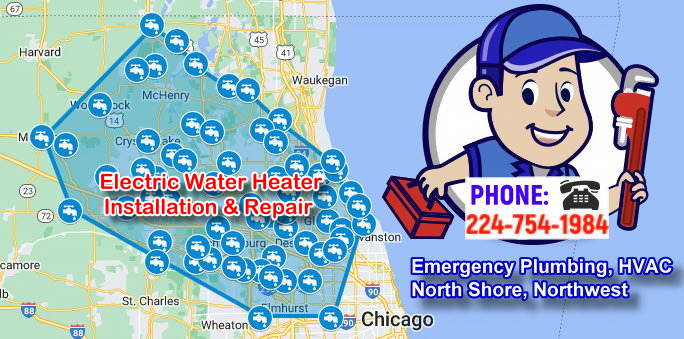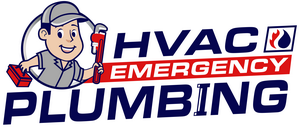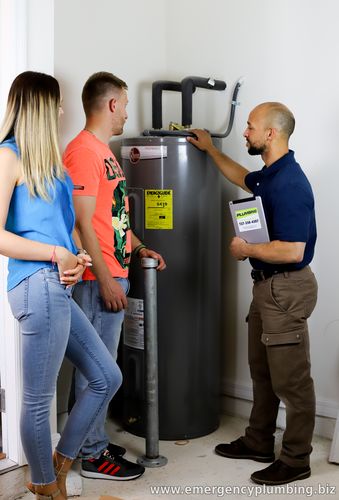Information on the cost of installing an electric water heater.
It's important to note that installation costs can vary depending on several factors such as location, the complexity of the installation, and any additional modifications required. On average, you can expect to pay anywhere between $500 to $1,500 for the installation of an electric water heater. This estimate includes the labor costs involved in disconnecting and removing the old water heater, installing the new unit, and making necessary electrical and plumbing connections. Keep in mind that additional expenses may arise if there are complications during the installation, such as the need for rerouting pipes, upgrading electrical wiring, or obtaining permits. Remember, investing in a professional installation ensures the job is done safely and efficiently, providing reliable hot water for your household. If you'd like to receive more precise cost estimates or find trusted professionals near you, our team would be happy to assist you further.
Disclaimer: Please consider that the price ranges provided are approximations and can vary significantly depending on various factors. Always consult with local professionals to receive accurate cost estimates for your specific installation.
If you are looking for guidance and information about the installation of an electric water heater, you've come to the right place.
In this section, we will guide you through the process step by step, ensuring a smooth and hassle-free installation. Before getting started, it's important to note that if you are not comfortable working with electricity or plumbing, we recommend hiring a professional electrician and plumber to ensure the job is done safely and efficiently. Now, let's dive into the installation process!
Step 1: Planning and Preparation First, determine the right location for your electric water heater. It should be easily accessible for maintenance and have proper ventilation to prevent overheating. Make sure to also check your local building codes and regulations before proceeding.
Step 2: Gathering the necessary tools and materials To complete the installation, you'll need a few tools and materials, such as a pipe cutter, adjustable wrench, Teflon tape, wire strippers, a voltage tester, and of course, your electric water heater. Be sure to follow the manufacturer's recommendations when selecting your water heater.
Step 3: Shut off the power and water supply Before starting any work, turn off the power supply to the area where the water heater is being installed. Locate the electrical circuit breaker panel and switch off the corresponding circuit. Additionally, shut off the water supply to prevent any leaks during the installation process.
Step 4: Removal of the old water heater (if applicable) If you're replacing an old water heater, disconnect it from the power supply and plumbing. Drain the water by attaching a hose to the drain valve and directing it to a suitable drain or outside location. Once drained, carefully remove the old water heater from its location.
Step 5: Installation of the new water heater Place the new water heater in the desired location, ensuring it is stable and level. Connect the water supply lines using the appropriate fittings and secure them tightly with a wrench. Apply Teflon tape to the threaded connections to prevent leaks.
Step 6: Electrical connections Follow the manufacturer's instructions to connect the electrical wiring to the water heater. Ensure that the power supply matches the voltage requirements of the unit. If you are unsure about the electrical connections, it's best to consult a licensed electrician for assistance.
Step 7: Filling and testing With the electrical and water connections complete, slowly turn on the water supply to fill the tank. Inspect all water connections for any leaks and promptly address any issues if they arise. Once the tank is filled, restore power to the water heater.
Step 8: Safety measures To ensure safe operation, it is crucial to set the temperature and pressure relief valve according to the manufacturer's instructions. This valve is designed to release excess pressure and prevent the tank from bursting. Regularly check and maintain this valve to ensure its functionality.
Congratulations! You have successfully installed your electric water heater.
Remember, it's essential to follow the manufacturer's instructions and consult professionals whenever necessary. If you have any further questions or concerns, feel free to reach out to our support team, and we'll be more than happy to assist you. Disclaimer: The information provided above is for informational purposes only. Always consult the manufacturer's instructions and consider hiring a professional to ensure a safe and accurate installation process.
With multiple locations throughout North Shore and Northwest suburbs of Chicago, Illinois, Emergency Plumbing offers promt and professional plumbing services.
Are you looking for a reliable plumber near me in the Arlington Heights, Bannockburn, Barrington, or surrounding areas?
Our local plumbing company offers expert services, catering to all your needs. Whether you're in the heart of Buffalo Grove, the serene streets of Deerfield, or require an emergency plumber in Des Plaines or Elk Grove Village, we are here to help. Our plumbing contractors are well-versed in the unique plumbing systems of Glencoe, Glenview, Hawthorn Woods, and Highland Park.
For those in Highwood, Hoffman Estates, or the quaint town of India Creek, our team guarantees prompt and efficient service.
Residents of Inverness, Kildeer, Lake Bluff, Lake Forest, and Lake Zurich can also rely on our expertise. We extend our services to Long Grove, Mettawa, Lincolnshire, Mount Prospect, Mundelein, Northbrook, and Palatine.
Need a plumber in Prospect Heights, Ravinia, RiverWoods, Rolling Meadows, Vernon Hills, Wauconda, Wheeling, Wilmette, or Winnetka? Look no further! As a trusted plumbing contractor, we ensure that your plumbing issues are solved quickly and efficiently, keeping your home or business running smoothly.



